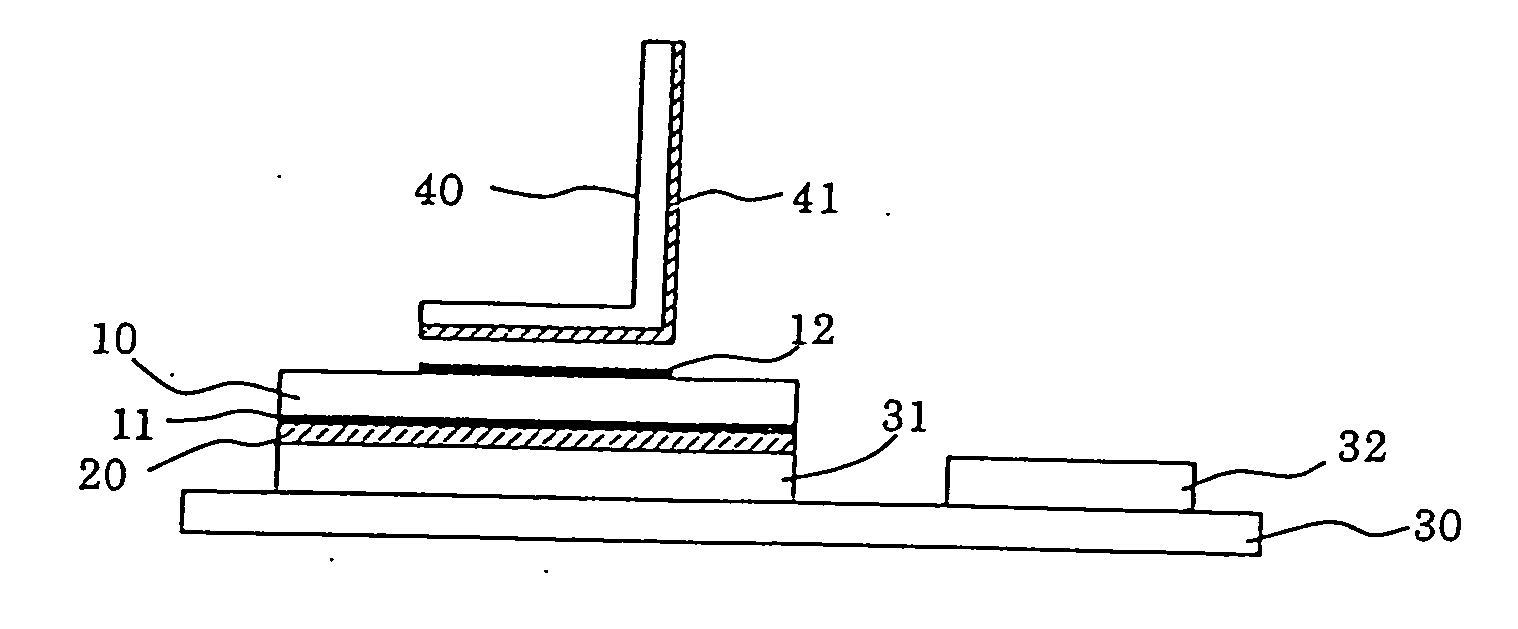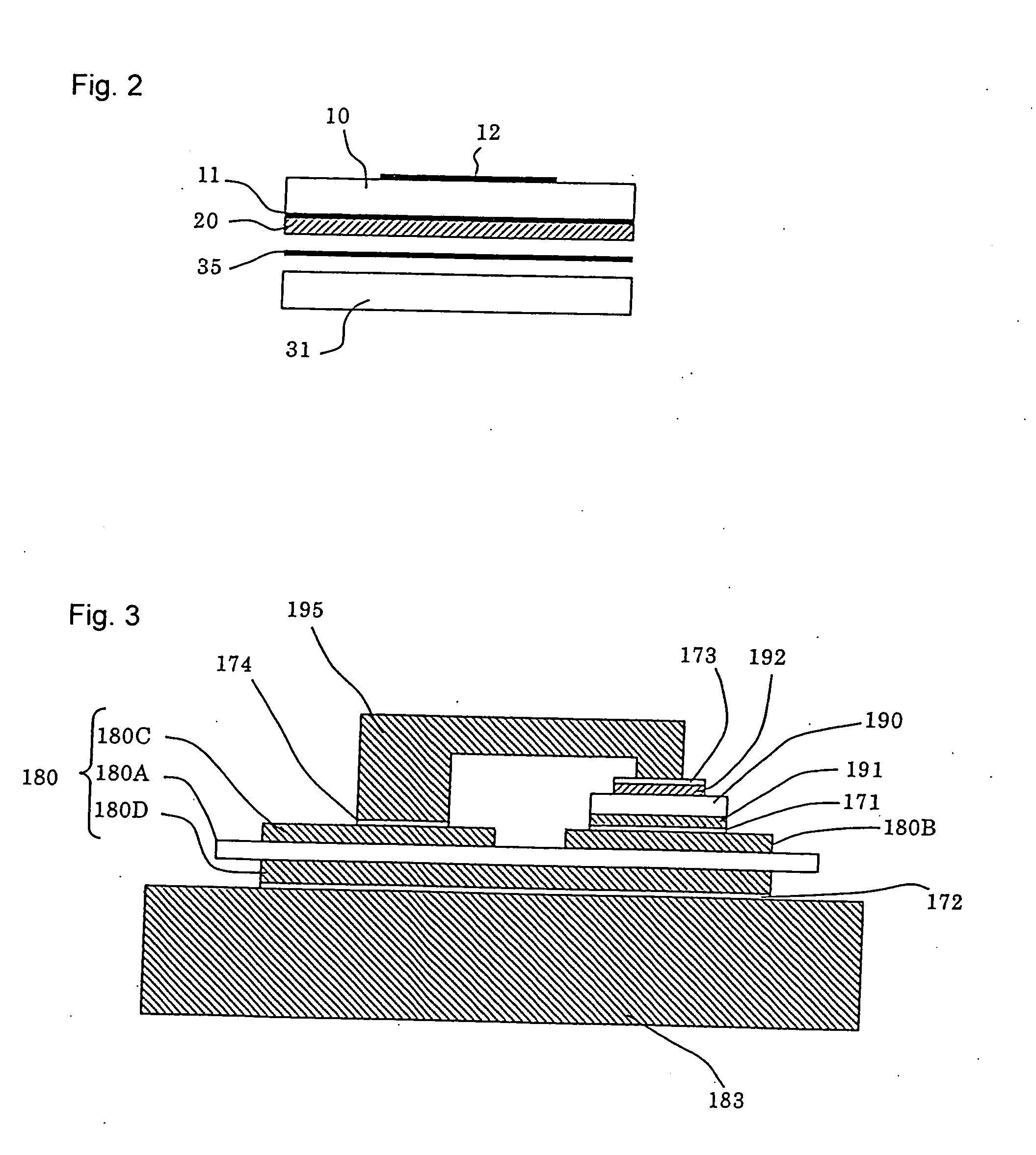Manufacturing method of semiconductor module
a manufacturing method and semiconductor technology, applied in semiconductor devices, semiconductor/solid-state device details, electrical devices, etc., can solve the problems of easy damage to the semiconductor die, complicated steps, and breakage of the joining interface by thermal stress, so as to reduce the heat resistance of the joining portion, improve the heat radiation effect, and reduce the heat resistance
- Summary
- Abstract
- Description
- Claims
- Application Information
AI Technical Summary
Benefits of technology
Problems solved by technology
Method used
Image
Examples
example 1
[0154] A following semiconductor module is manufactured in accordance with the steps shown in FIG. 1.
[0155] First of all, an IGBT die is used as the semiconductor die. On the semiconductor die, as the front-surface-die electrode and the back-surface-die electrode, a three-layered electrode which is made of Ti / Ni / Au and has an Au layer on a topmost surface thereof is formed.
[0156] On the other hand, on an Al-base insulation circuit board made of Al as a base material, an electrode made of Cu and having a thickness of 0.32 mm is formed as the first circuit electrode.
[0157] Then, as the connecting member, a lead frame made of Cu alloy and having a thickness of 0.25 mm is used.
[0158] Next, the low-melting-point metal layer made of SnIn (melting point: 117° C.) and having a thickness of 5 μm is formed on the back-surface-die electrode by sputtering, and the low-melting-point metal layer made of SnIn (melting point: 117° C.) and having a thickness of 5 μm is formed on the whole surfac...
example 2
[0163] The semiconductor module is manufactured under the same conditions as the example 1 except for the following. That is, in the example 1, the low-melting-point metal layer having a total thickness of 1 μm is formed by sequentially stacking a Sn layer made of a single metal layer and having a thickness of 0.48 μm and an In layer made of a single metal layer and having a thickness of 0.52 μm using sputtering. In the respective first to third steps, the preheating is performed at a temperature of 120° C. for 10 seconds, and the Sn layer and the In layer are formed into the solid solution thus obtaining a SnIn alloy layer. Thereafter, the first to third joining steps are performed.
[0164] Accordingly, in this example 2, in the same manner as the example 1, it is also possible to manufacture the semiconductor module at a temperature equal to or below 200° C. without soldering.
PUM
 Login to View More
Login to View More Abstract
Description
Claims
Application Information
 Login to View More
Login to View More - R&D
- Intellectual Property
- Life Sciences
- Materials
- Tech Scout
- Unparalleled Data Quality
- Higher Quality Content
- 60% Fewer Hallucinations
Browse by: Latest US Patents, China's latest patents, Technical Efficacy Thesaurus, Application Domain, Technology Topic, Popular Technical Reports.
© 2025 PatSnap. All rights reserved.Legal|Privacy policy|Modern Slavery Act Transparency Statement|Sitemap|About US| Contact US: help@patsnap.com



